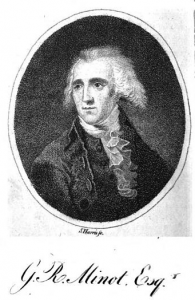The passing of the Constitution in Massachusetts did not heal the west and east division that Shays Rebellion had risen from, they would remain for a long time. However, another rebellion in the manner of Shays has not happened in Massachusetts since, and the embers left by Shays’ Rebellion were never fanned again. Several factors helped resolve this conflict from ever becoming violent again. Certainly, John Hancock’s support and symbolic act helped volumes for the feelings of many involved but that was not all.
The forgiving nature of the government helped to curb the resentment, heavy punishments were pushed for at first but were rejected in 1787. Instead, as Thomas Jefferson suggested, the rebels were for the most part pardoned in exchange for an oath of loyalty to the government. [1] This included Daniel Shays himself.
Ironically, the one thing the Anti-Federalists feared the most, the Constitution, ended up giving what Shays’ Rebellion wanted; debt forgiveness. Under a program pushed by Alexander Hamilton, the program had the federal government soak up the debt from its states. [2] This would forever lift the debt out of Massachusetts and would no longer bother the farmers of Massachusetts.

Bu Polyantos, Portrait of George Richards Minot, 1806, via Wikimedia Commons.
A final bridge between the two sides came from George Richards Minot. Minot published what was the first history of the rebellion a year after it ended. The important thing to note is he was part of what the farmers would consider “aristocracy” as a Boston Lawyer. However, Minot offered the farmers a rather positive image in his history, portraying them as misled and poverty struck, instead of violent insurgents. [3] His conclusion was also neutral and praised the forgiving nature of the government:
Thus was a dangerous internal war finally suppressed, by the spirited use of constitutional powers, without the shedding of blood by the hand of the civil magistrate; a circumstance, which it is the duty of every citizen to ascribe to its real cause, the lenity of government, and not to their weakness; a circumstance too, that must attach every man to a constitution, which, from a happy principle of mediocrity, governs its subjects without oppression, and reclaims them without severity. [4]
While it did not fully heal, Minot’s book puts a nice conclusion and reaffirmation that further allowed the rebels to assimilate back into society. The rebels were wrong, they admitted it and the government did a good thing, and offered them forgiveness and warmth instead of mass repression.
The conflict of Massachusetts and her farmers shows how a conflict can arise even in an area where culture, religion and race are much the same. Lines in the sand were drawn over wealth and it threatened the formation of the country. While Shays’ Rebellion did not end peacefully, the resulting conflict over the constitution did. Massachusetts also helped prevent the feelings that may have caused another Shays’ Rebellion from happening. It did this not through one side winning a debate, force or bitterness. The conflict ended, and union began through empathy, forgiveness and of course, the federal government actually working.
_____________________________________________________________________________________________________________________________________________________________
[1] Sean Condon, Shays’s Rebellion (Baltimore: John Hopkins University Press, 2015), 121.
[2] Leonard L. Richards, Shays’s Rebellion: The American Revolution’s Final Battle (Philadelphia: University of Pennsylvania Press, 2002), 156.
[3] Ibid, 159.
[4] George Richards Minot, The History of the Insurrections, in Massachusetts, in the Year MDCCLXXXVI, and the Rebellion Consequent Thereon (Worcester: Isaiah Thomas, 1788), 192.